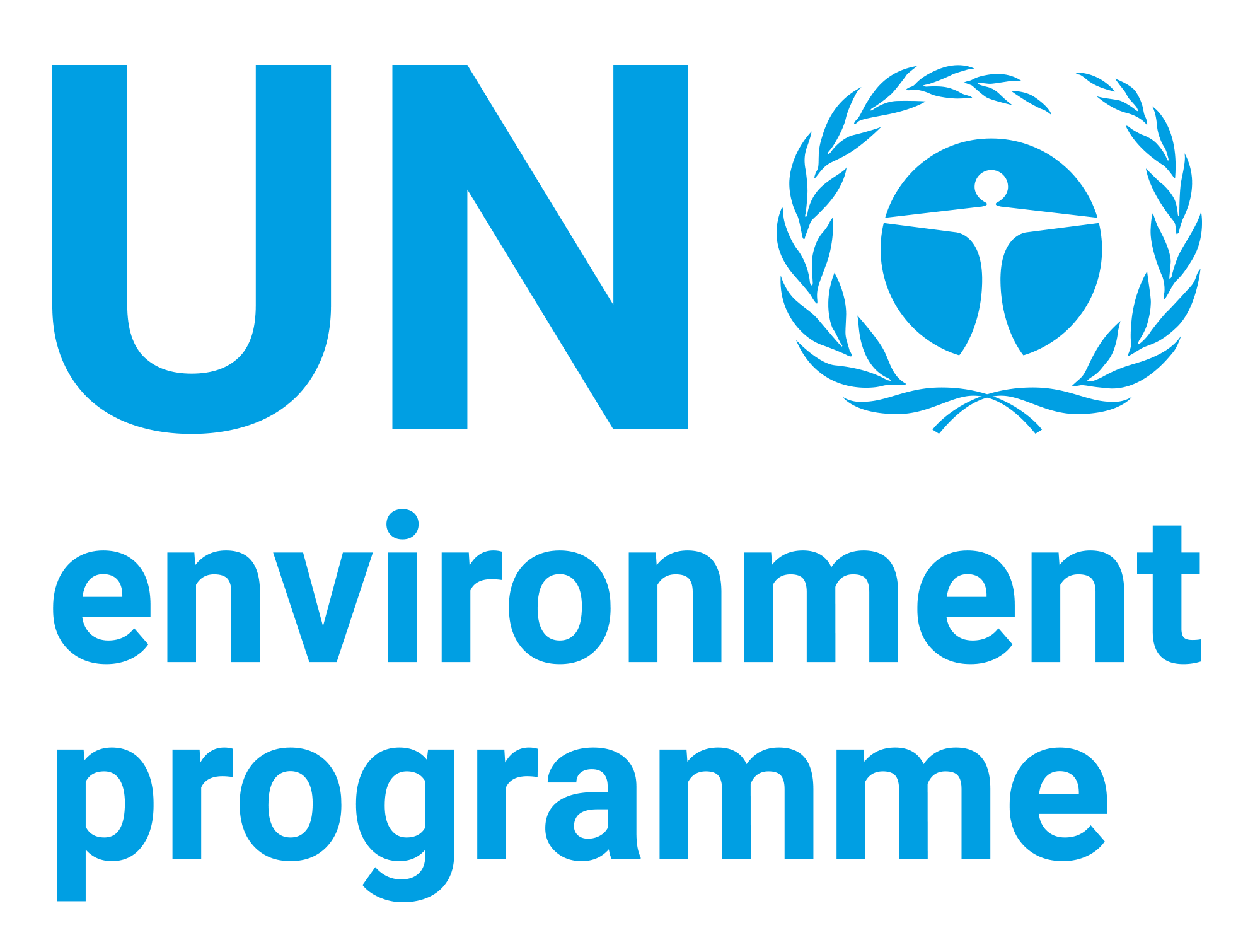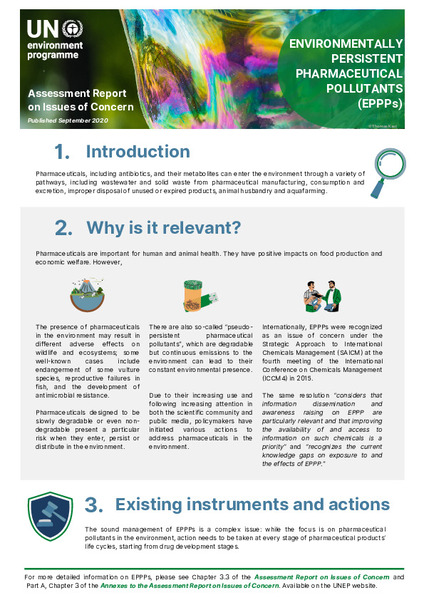| dc.contributor | Economy Division | en_US |
| dc.contributor.author | United Nations Environment Programme | en_US |
| dc.date.accessioned | 2022-12-16T10:25:05Z | |
| dc.date.available | 2022-12-16T10:25:05Z | |
| dc.date.issued | 2020-09 | |
| dc.identifier.other | DTI/2306/GE | en_US |
| dc.identifier.uri | https://wedocs.unep.org/20.500.11822/41470 | |
| dc.description | A two-page summary of the information on environmentally persistent pharmaceutical pollutants (EPPPs) contained in the 2020 UNEP Assessment Report on Issues of Concern: Chemicals and Waste Issues Posing Risks to Human Health and the Environment and the 2019 Global Chemicals Outlook II. Pharmaceuticals, including antibiotics, and their metabolites can enter the environment through a variety of pathways, including wastewater and solid waste from pharmaceutical manufacturing, consumption and excretion, improper disposal of unused or expired products, animal husbandry and aquafarming. | en_US |
| dc.description.uri | https://www.unep.org/resources/report/chemicals-and-waste-reports-unea-5 | en_US |
| dc.format | pdf | en_US |
| dc.language | English | en_US |
| dc.relation | An Assessment Report on Issues of Concern: Chemicals and Waste Issues Posing Risks to Human Health and the Environment | en_US |
| dc.relation.ispartof | An Assessment Report on Issues of Concern: Chemicals and Waste Issues Posing Risks to Human Health and the Environment | en_US |
| dc.rights | Public | en_US |
| dc.subject | chemical industry | en_US |
| dc.subject | pharmaceutical | en_US |
| dc.subject | antimicrobial resistance | en_US |
| dc.subject | pharmaceutical waste | en_US |
| dc.title | Environmentally Persistent Pharmaceutical Pollutants (EPPPs) - Assessment Report on Issues of Concern | en_US |
| wd.identifier.sdg | SDG 3 - Good Health and Well-being | en_US |
| wd.topics | Chemicals and Pollution Action | en_US |
| wd.identifier.pagesnumber | 2 p. | en_US |
| wd.identifier.institutions | United Nations Environment Assembly | en_US |


